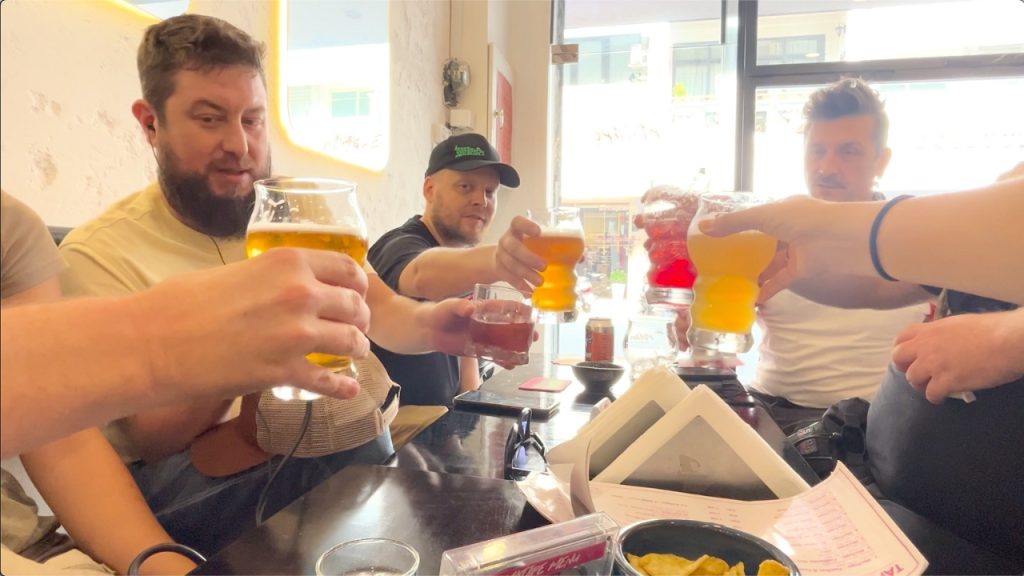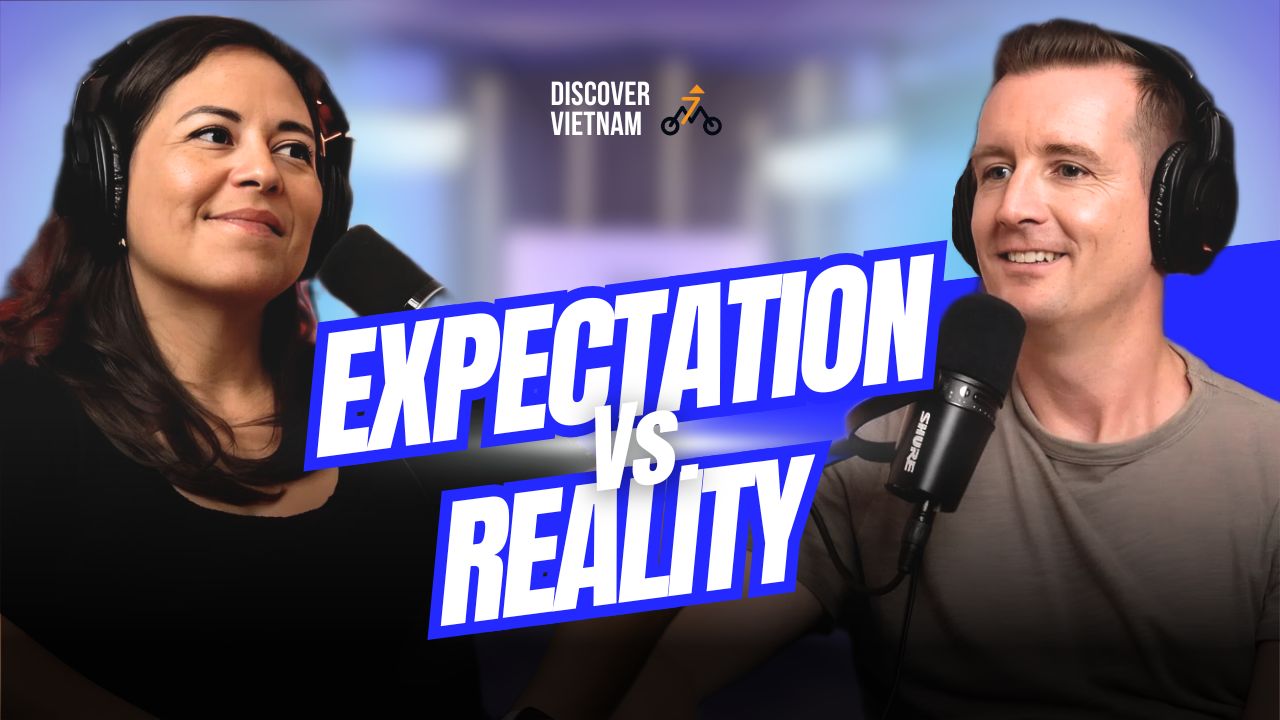When I first arrived in Vietnam back in 2016 with my wife, Adrie, we were travelers. We thought we would stay for six months, eat cheap street food, and then move on. Nine years later, we were still in Ho Chi Minh City, now long-term expats with a very different idea of what the cost of living in Vietnam really meant.
I wanted to write this post because I see the same questions come up again and again: Is Vietnam cheap to live in? How much money do you need to live in Vietnam? Can you really live here on $1,000 a month?
The answers are not so simple. Vietnam can be very affordable compared to the US, UK, New Zealand, or Australia. But the lifestyle you choose makes all the difference. Over the years, I learned that cheap living is possible, but long-term comfort and security require more planning. Let’s discover the real cost in Vietnam.
The Myth of “Everything Is Cheap”
When we first moved to Ho Chi Minh City, we thought everything would be almost free. We had seen YouTube videos and blog posts about $1 beers and $2 meals. And it was true — we could get a bowl of phở on the street for less than a dollar.
But then reality hit us. Our first apartment in District 1 cost around $700 a month. It was furnished and central, but it had no real kitchen. That was not the bargain we expected. Rent quickly became our biggest cost, just like in the West.
Even small things added up. A beer might only be $1, but if we both had four in a day, that was already $8. When we were traveling on savings, that still felt expensive.
The lesson was simple: cheap does not mean free. Living in Vietnam on a budget is possible, but you still need money and a plan.
A Wide Range of Costs
One thing that makes the cost of living in Vietnam unique is the wide range of prices for almost everything.
For example:
- A street coffee can be 15,000 VND (60 cents). A Starbucks coffee can be 110,000 VND ($4–5).
- A local beer at a street stall can be 10,000 VND. A craft beer can be 160,000 VND or more.
- Rent can be as low as $250 for a studio outside the city center, or $1,000+ for a modern apartment in District 1 or Thao Dien.
In New Zealand, a cup of coffee was always around $4.50. In Vietnam, the range is much wider. That means your budget depends heavily on your lifestyle. Do you want to live like a backpacker, or like an expat with Western comforts?
This flexibility is both a blessing and a challenge. You can live cheaply, but the temptations are everywhere — international restaurants, imported groceries, fancy gyms. And once you get used to certain comforts, it’s hard to go back.

Can You Live on $1,000 a Month?
This is the question I hear most often. People ask in expat groups or search online: Can you live in Vietnam for $1,000 a month?
The short answer: yes, you can. But it depends on what kind of life you want.
If you rent a small studio, eat mostly street food, and don’t travel much, $1,000 (about 25 million VND) can cover your basic living expenses. You could even share an apartment with a roommate and save more.
But here’s the problem: that lifestyle leaves no room for savings, health insurance, gym memberships, or even the occasional Western meal. You can survive, but you won’t thrive.
For me, the better question is: Do you want to just get by, or do you want to have a good quality of life and feel secure?
Hidden and Overlooked Costs
When I looked back at our years in Vietnam, I realized that many important costs were not obvious at first.
Pension and Savings
In countries like the UK or New Zealand, your pension is automatically deducted from your paycheck. In Vietnam, nothing is automatic. It took us two years to realize we weren’t saving for retirement at all. That was a big mistake.
Health Insurance
Some people don’tbother with health insurance. But it’s risky to live without it. One accident or illness can wipe out your savings. This is a hidden cost of living in Vietnam that many expats forget about if it doesn’t come with your job
Transportation
Most expats use motorbikes. Renting a bike can cost about 1 million VND a month ($40). At first, that seemed fine. But over time, it adds up. I bought a Honda Wave for around 9 million VND and used it for years without problems. Renting for nine years would have cost me over 100 million VND.
I learned the hard way, too. Once I bought a Yamaha Nouvo because it was cheap. It broke down constantly, and I regretted it. My advice: buy a Honda, not a Yamaha.
Gym and Fitness
I was shocked by gym prices. California Fitness, one of the big chains, asked us to pay a full year upfront in cash. It was around $500, which felt very expensive at the time. Even smaller gyms are not as cheap as people expect. If you want air conditioning and good equipment, you’ll pay close to Western prices.
Groceries and Food
Street food in Vietnam is cheap and tasty, but not always healthy. We cared about eating well, so we bought things like oats, chia seeds, flax seeds, and sometimes organic vegetables. These were much more expensive than back home.
I recently saw a small organic broccoli for 110,000 VND (around $5) . A bag of Pepperidge Farm Goldfish crackers has now gone from 70,000 to nearly 100,000 VND over the years. And Ritter Sport chocolate has almost doubled in price recently. Vietnam is not immune to a rise in the cost of living
These little things may sound small, but they change your monthly budget a lot.
A Simpler but Richer Lifestyle
One thing I loved about living in Vietnam was how simple life could be. Back in New Zealand or the UK, I always felt pressure to buy more — new clothes, new gadgets, keeping up with trends.
In Vietnam, I didn’t feel that pressure as much. Partly because apartments are smaller and we had less storage, partly because advertising wasn’t aimed at me. That meant we bought less and lived with less.
We didn’t need winter wardrobes, multiple coats, or extra furniture. Life was easier with fewer things. That simplicity saved us money, but it also gave us a sense of freedom.
Of course, we were not immune to temptations. When Adidas opened in Vietnam, I spent too much there. And we still brought things back from overseas trips. But overall, the lifestyle here felt simpler, and in many ways richer.
Final Thoughts: Real Cost in Vietnam
So, what is the real cost of living in Vietnam? The truth is that it depends on the life you want to build.
Compared to the West, living in Vietnam can be around 60% cheaper. You can have a nice apartment, good food, and a comfortable life for much less money. But if you want to save, have health insurance, and enjoy more than just the basics, you will need more than $1,000 a month.
The advice I give people now is simple:
- Don’t move to Vietnam just because it’s cheap.
- Come with savings and a plan.
- Think long-term about your pension and health insurance.
- Decide what lifestyle you really want, not just what you can survive on.
For me, the cost of living in Ho Chi Minh City was never just about dollars and dong. It was about creating a life I enjoyed — one that was affordable, but also secure and fulfilling.

